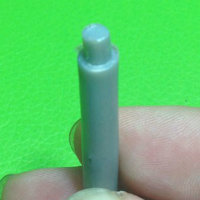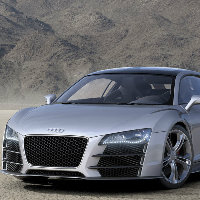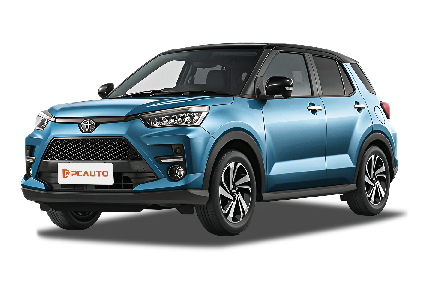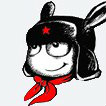Q
How many cylinders is Toyota Raize equipped with?
The Toyota Raize is powered by a 1.0-liter three-cylinder turbocharged engine. This compact SUV opts for the three-cylinder setup mainly to strike a balance between fuel efficiency and performance – a real sweet spot for Malaysia's stop-start city driving. The turbocharging tech helps overcome the small displacement, while the engine itself is lighter and more compact, which does wonders for keeping fuel consumption in check. For Malaysian buyers, the Raize's three-cylinder unit also has the edge over a four-cylinder when it comes to maintenance costs, though it's worth noting you might feel a bit more vibration at idle. Three-cylinders are definitely trending in this segment – take the Perodua Ativa, for example, which uses a similar layout. It just goes to show how carmakers are balancing stricter emissions regulations with what drivers actually need. If you're craving more oomph, there's a hybrid version of the Raize to consider, but honestly, the 1.0T three-cylinder already has more than enough pep for daily commuting – plus, you'll save on road tax.
Special Disclaimer: This content is published by users and does not represent the views or position of PCauto.
Related Q&A
Q
Are all Toyota Raize turbocharged?
Not all Toyota Raize models are turbocharged. The Toyota Raize comes in different powertrain versions. Among them, the 1.0L Turbo CVT model is equipped with a turbocharged engine. The intake type is Turbo, and the engine has a maximum horsepower of 98PS. However, there are also 1.2L models, including the 1.2L E CVT, 1.2L E MT, and 1.2L G CVT. These models have a displacement of 1198mL and are powered by naturally aspirated engines with a maximum horsepower of 88PS.
A turbocharged engine can provide greater power output with the same displacement, enhancing the vehicle's acceleration performance. On the other hand, a naturally aspirated engine features a simple structure, good stability, and low cost. It has a linear power output and can also meet the needs in daily driving.
Q
Is Toyota Raize keyless?
Yes, some models of the Toyota Raize in the Malaysian market are equipped with the Keyless Entry system. It specifically depends on the selected configuration level. Higher - spec versions usually come with this convenient feature, allowing car owners to unlock the doors or start the engine via the buttons on the door handles without taking out the keys. This compact SUV is also fitted with the Push Start function. When used in conjunction with the Keyless system, it can significantly enhance the daily convenience of using the vehicle.
For Malaysian consumers, such configurations are particularly useful in hot weather or when their hands are full. At the same time, the Raize maintains the Toyota models' consistent durability and low - fuel - consumption characteristics. Its 1.0L turbocharged engine is suitable for local road conditions. It should be noted that there may be configuration differences among different model years. It is recommended to confirm the latest specifications with authorized dealers before purchasing a car.
Similar technologies are also offered by competing models in the same class, such as the Honda HR - V and the Daihatsu Rocky. However, Toyota has an edge in terms of local after - sales network coverage and vehicle resale value. If your budget allows, choosing the version with the keyless system can provide a more modern driving experience, especially for urban users who often need to commute for short distances.
Q
Is the Toyota Raize a luxury car?
The Toyota Raize isn't a luxury car. It's positioned as a compact SUV, targeting the economical, practical, and youth - oriented market. It's suitable for Malaysian consumers with limited budgets but a preference for fashionable designs. The Raize is equipped with a 1.0 - liter turbocharged or a 1.2 - liter naturally aspirated engine, emphasizing fuel economy and urban driving flexibility. In terms of configuration, it offers basic technologies like a touch screen and a rear - view camera, but lacks high - end features commonly found in luxury cars, such as leather seats, premium audio systems, or intelligent driving assistance.
In the Malaysian market, its price range is similar to that of the Perodua Ativa, making it an affordable model. Luxury cars usually refer to high - end products from brands like Lexus and Mercedes, which come with more powerful engines, exquisite interiors, and brand premiums. If you want to know about its competitors in the same class, you can refer to the Honda HR - V or the Mazda CX - 3. They offer a more near - luxury experience in some configurations, but their prices are relatively higher. Consumers who choose the Raize value cost - effectiveness and Toyota's reputation for durability more than luxury features.
Q
Does Toyota Raize Equip with Lane Assist?
Yes, the Toyota Raize is equipped with the Lane Assist system on some high-end models. This feature is usually included in the Toyota Safety Sense (TSS) active safety package. It monitors the lane lines through a camera and provides steering wheel correction or warnings when the vehicle drifts out of the lane, helping the driver keep the vehicle centered in the lane. It should be noted that the specific configuration may vary depending on the year and model version. It is recommended that Malaysian consumers confirm with local dealers before purchasing or refer to the official specification sheet.
Lane Assist is part of the ADAS (Advanced Driver - Assistance Systems). This kind of technology has gradually become popular in the Malaysian market in recent years. In addition to Toyota, other brands such as Honda and Mazda also offer similar functions, but the implementation methods may vary slightly. For example, some systems only provide warnings, while others actively intervene in steering. For owners who often drive long-distance, this kind of feature can effectively reduce fatigue, but it should be noted that it is not fully autonomous driving, and the driver still needs to maintain control of the vehicle.
Q
What is the safety rating of the Toyota Raize?
The safety rating of the Toyota Raize performs well in the Southeast Asian market. Its base - model vehicle received a 4 - star rating (out of 5) in the ASEAN NCAP test, mainly thanks to the standard basic safety features such as dual airbags, ABS anti - lock braking system, and vehicle stability control system. If the high - end version adds side airbags and other configurations, it is expected to be upgraded to a 5 - star rating.
For Malaysian consumers, the Raize's active safety features, such as the Pre - Collision System (PCS) and Lane Departure Warning (LDW), are at the mainstream level in the B - SUV segment. However, it should be noted that the test results are based on the ASEAN NCAP standard, which differs from the test items of the European Euro NCAP or the Japanese JNCAP.
Malaysian car owners can consider the differences in safety - configuration versions according to their own needs when making a purchase. For example, users who often drive long - distance are recommended to choose models equipped with adaptive cruise control. At the same time, it is advisable to visit authorized dealers to experience the demonstration of the vehicle's safety functions to have a more comprehensive understanding of the vehicle's protection performance.
Q
Is Toyota Raize a Hybrid Model?
Currently, all versions of the Toyota Raize available in the Malaysian market are pure fuel-powered models, and no Hybrid version has been launched. This vehicle is equipped with a 1.0L turbocharged engine or a 1.2L naturally aspirated engine, targeting the economical and practical small SUV market. For Malaysian consumers who are interested in hybrid technology, Toyota also offers other popular hybrid models in the local market, such as the Corolla Cross Hybrid or the Yaris Cross Hybrid. These models adopt Toyota's mature THS II hybrid system, which can significantly improve fuel efficiency and reduce emissions. In recent years, the Malaysian government has been encouraging the popularization of hybrid and electric vehicles through policies like tax exemptions. Therefore, if a hybrid version of the Raize is launched in the future, it may attract more local users who care about environmental protection and fuel consumption. It should be noted that although hybrid technology can save fuel, the purchase cost is usually higher than that of the fuel-powered version. It is recommended that consumers make a choice based on their actual budget and vehicle-using needs. Meanwhile, they can also pay attention to the actual test reports of hybrid technology by Malaysian automotive media to get more comprehensive reference information.
Q
What is the difference between Toyota Ativa and Raize?
The Toyota Ativa and Raize are essentially the same model with different names in different markets. The Ativa is the exclusive name for Toyota in the Malaysian market, while the Raize is the common name in the international market. Both are built on the DNGA platform and share core technologies and designs. In the Malaysian market, the Ativa has undergone some adaptation adjustments to meet local needs. For example, the suspension is tuned to better suit tropical road conditions, and it may offer configuration options that match the preferences of Malaysian consumers, such as ventilated seats or extra storage space.
In terms of power, both are equipped with a 1.0 - liter turbocharged three - cylinder engine paired with a CVT transmission. However, the ECU tuning of the Ativa may take into account the fuel quality and climate conditions in Malaysia. In terms of appearance, the Ativa continues the compact SUV design of the Raize, but there may be slight differences in the front grille or wheel styles to enhance local recognition.
It's worth noting that this "twin - model" strategy is quite common in the automotive industry, aiming to improve market acceptance through localization optimization. For example, the Proton X50 and Geely Binyue also have a similar relationship. For Malaysian consumers, choosing the Ativa means enjoying comprehensive after - sales support from Toyota's national dealer network. On the other hand, parallel - imported Raizes may face differences in warranty and parts supply. It is recommended to carefully compare the configuration lists and after - sales service terms before purchasing a car.
Q
Will Toyota Raize be Introduced in Malaysia?
Currently, it hasn't been officially confirmed whether Toyota Raize will be introduced into the Malaysian market. However, considering its popularity in other Southeast Asian countries and Toyota's product layout in Malaysia, there's a possibility of its introduction in the future. As a compact SUV targeting the young market, Raize has performed well in markets like Indonesia and Thailand, thanks to its stylish appearance, fuel efficiency, and Toyota's reputation for reliability. If it enters the Malaysian market, it may compete with models such as Honda HR-V and Proton X50. The demand for compact SUVs among Malaysian consumers has been continuously increasing. Coupled with the advantage of local assembly by Toyota UMW, Raize will be more price - competitive if it's locally produced. It should be noted that the Malaysian market has a greater preference for hybrid vehicles. If Raize can offer a hybrid version, it will better align with the local trend. It is recommended to follow the official website of Toyota Malaysia or local auto show information, as new vehicle introductions are usually officially announced through these channels. For consumers with a limited budget who still want Toyota's quality, they can first look into the currently available Toyota Rush or second - hand C - HR models as transitional options.
Q
Is Toyota Raize automatic?
Yes, the Toyota Raize available in the Malaysian market comes with an automatic transmission. Specifically, it is equipped with a D-CVT continuously variable transmission. This type of transmission combines the smoothness of a traditional CVT with the driving feel of simulated gear shifts. It is suitable for city commuting and boasts excellent fuel economy. As a compact SUV under the Toyota brand, the Raize is targeted at the younger demographic. The combination of its 1.0-liter turbocharged engine and automatic transmission strikes a good balance between power and fuel consumption, making it a great fit for the stop-and-go traffic conditions in Malaysia.
It's worth noting that automatic transmissions are quite popular in the Malaysian market because they are easy to operate and well - suited for congested roads. Moreover, the Raize's D - CVT also offers a sport mode, which can enhance the acceleration response. When considering models in the same class, the Honda HR - V and Nissan Kicks are also common choices with automatic transmissions. However, the Toyota Raize has a certain edge in terms of cost - effectiveness, thanks to its more affordable price and warranty policy.
It is recommended that you take a test drive at an authorized dealer before purchasing a car to see if the transmission tuning meets your personal driving habits.
Q
How many litres does the Toyota Raize's fuel tank hold?
The fuel tank capacity of the Toyota Raize is 36 liters. This small SUV has gained popularity in the Malaysian market for its economic practicality and stylish design. Its fuel tank design takes into account the needs of daily commuting and short-distance trips. Paired with a 1.0-liter turbocharged or a 1.2-liter naturally aspirated engine, it can offer a combined fuel consumption of about 15 to 18 kilometers per liter, and the full-tank range can reach around 500 to 600 kilometers.
For Malaysian users, it's necessary to pay attention to the choice of fuel. It is recommended to use RON95 gasoline to balance economy and engine performance. At the same time, regularly checking the tightness of the fuel tank cap can prevent evaporation losses. If you're going on a long-distance drive, you can flexibly plan your stops at gas stations based on its minimum turning radius of 7.4 meters.
In the same class, models like the Honda HR-V or the Proton X50 have a fuel tank capacity of about 40 to 45 liters. However, thanks to its lighter vehicle weight and efficient power tuning, the Raize still remains competitive in terms of fuel economy. Owners can further optimize the actual fuel consumption through reasonable driving habits.
Popular Cars
Model Year
Car Compare
Car Photo
Latest Q&A
Q
Does the 2019 Golf GTI have a timing belt or chain?
The 2019 Golf GTI uses a timing chain instead of a timing belt—a design that offers better durability and lower maintenance costs. Typically, a chain lasts as long as the engine itself and rarely needs replacement, whereas a belt requires inspection or replacement every 60,000 to 100,000 km. If neglected, a worn belt can snap and cause severe engine damage.
VW’s EA888 engine family has long relied on chain-driven systems, which are relatively quiet and highly reliable. That said, it’s crucial to periodically check the tensioner’s condition. Some earlier models experienced timing issues due to tensioner design flaws, but this was addressed in the 2019 version.
For performance enthusiasts, a chain system handles high-revving stress better, making it a common choice for hot hatches like the GTI. For daily driving, just stick to VW 50400/50700-spec oil as recommended in the manual—proper lubrication keeps the chain system healthy long-term.
One heads-up: If you hear noticeable metallic rattling near the front of the engine, have the guides or tensioner inspected ASAP. Unlike the telltale belt squeal before failure, this noise is a classic sign of chain-related wear.
Q
What is the recall on the 2019 GTI?
The 2019 Volkswagen Golf GTI was subject to a safety recall addressing two potential issues. First, the fuel pump control unit software could malfunction, potentially causing engine stalling in rare cases. Second, some vehicles might have rear suspension stabilizer link bolts that weren't tightened to specification, posing a loosening risk. Owners can visit authorized dealers for free software updates or bolt retightening.
These proactive recalls demonstrate Volkswagen's commitment to safety. Dealers often handle outstanding recall items during routine maintenance.
For performance-oriented models like the GTI, it's wise to go beyond recall checks. Pay close attention to the turbo system, DSG transmission fluid, and brake wear—these components endure more stress during spirited driving. If warning lights appear or you notice unusual noises, get a professional inspection promptly. Keeping the car in top shape ensures you can fully enjoy its dynamic capabilities.
Q
Does the 2019 GTI require premium gas?
The 2019 GTI does recommend using high-octane fuel (typically RON 95 or above). Its 2.0L turbocharged engine has a relatively high compression ratio, and premium gas ensures optimal performance while reducing knock risk. It also helps maintain engine cleanliness and long-term reliability.
While the car may tolerate lower-octane fuel (like RON 92), you’d see slightly reduced power output and fuel efficiency. Over time, it could also affect engine longevity. Turbocharged engines are particularly sensitive to octane ratings since turbos generate higher heat and pressure—high-octane fuel handles these conditions better.
Mixing different fuel grades occasionally won’t hurt, but sticking to the manufacturer’s recommendation is ideal. Also, periodic fuel additive treatments can help clean carbon buildup, especially for direct-injection engines.
One more thing: even with the same octane rating, fuel additive packages vary by brand. So, picking a reputable gas station matters too.
Q
How long will a 2019 GTI last?
The lifespan of a 2019 GTI largely depends on maintenance and driving habits. With regular oil changes, transmission fluid replacements, and avoiding aggressive driving, it can easily clock over 200,000 kilometers—or even more. Its 2.0T engine and DSG gearbox are proven combos, and as long as you stick to the factory service schedule, mechanical reliability won’t be an issue.
Just keep in mind: turbocharged engines demand extra care. Always use the right spec full-synthetic oil and monitor the cooling system. Climate plays a role too—hot, humid conditions mean paying extra attention to rubber seals and electronics. Every 50,000 km, have the timing chain and high-pressure fuel pump inspected (key items for turbos).
Driving style matters. Don’t redline it constantly, and let the engine warm up properly after cold starts. Rustproofing helps long-term durability, so regular underbody washes are smart. Nail these details, and this car’s built to last.
Q
How fast is the 2019 GTI?
The 2019 GTI truly delivers when it comes to performance. Under the hood lies a punchy 2.0-liter turbocharged four-cylinder, churning out 228 horsepower and 350 Nm of torque. Whether you opt for the engaging 6-speed manual or the lightning-fast 7-speed DSG, this hot hatch rockets from 0-100 km/h in just 6.3 seconds, with an electronically limited top speed of 250 km/h.
What really sets the GTI apart is its razor-sharp handling. The sport-tuned suspension and electronic differential lock work together to deliver precise steering and rock-solid cornering stability. It’s the perfect blend of everyday practicality and proper driver’s car thrills—a well-rounded hot hatch in every sense.
For enthusiasts, the GTI’s tuning potential is massive. Many owners go for ECU remaps or intake/exhaust upgrades to squeeze out even more power. Just remember to keep things street-legal—safety and compliance should always come first. Around here, these pocket rockets have a solid following, and it’s easy to see why.
View MoreRelated News

Toyota Raize: When will this smart and compact SUV be available in Malaysia?
AshleyDec 2, 2025

Rare big move, Toyota releases three sports cars: GR GT, GR GT3, Lexus LFA Concept
JamesDec 5, 2025

Rare move, Toyota will release three important models in one go on December 5th
AshleyDec 4, 2025

Will the Toyota Sienna be sold in Malaysia in the future?
JamesDec 4, 2025

Why is the Toyota Sienna so popular with so many people?
RobertDec 1, 2025
View More















Pros
Cons